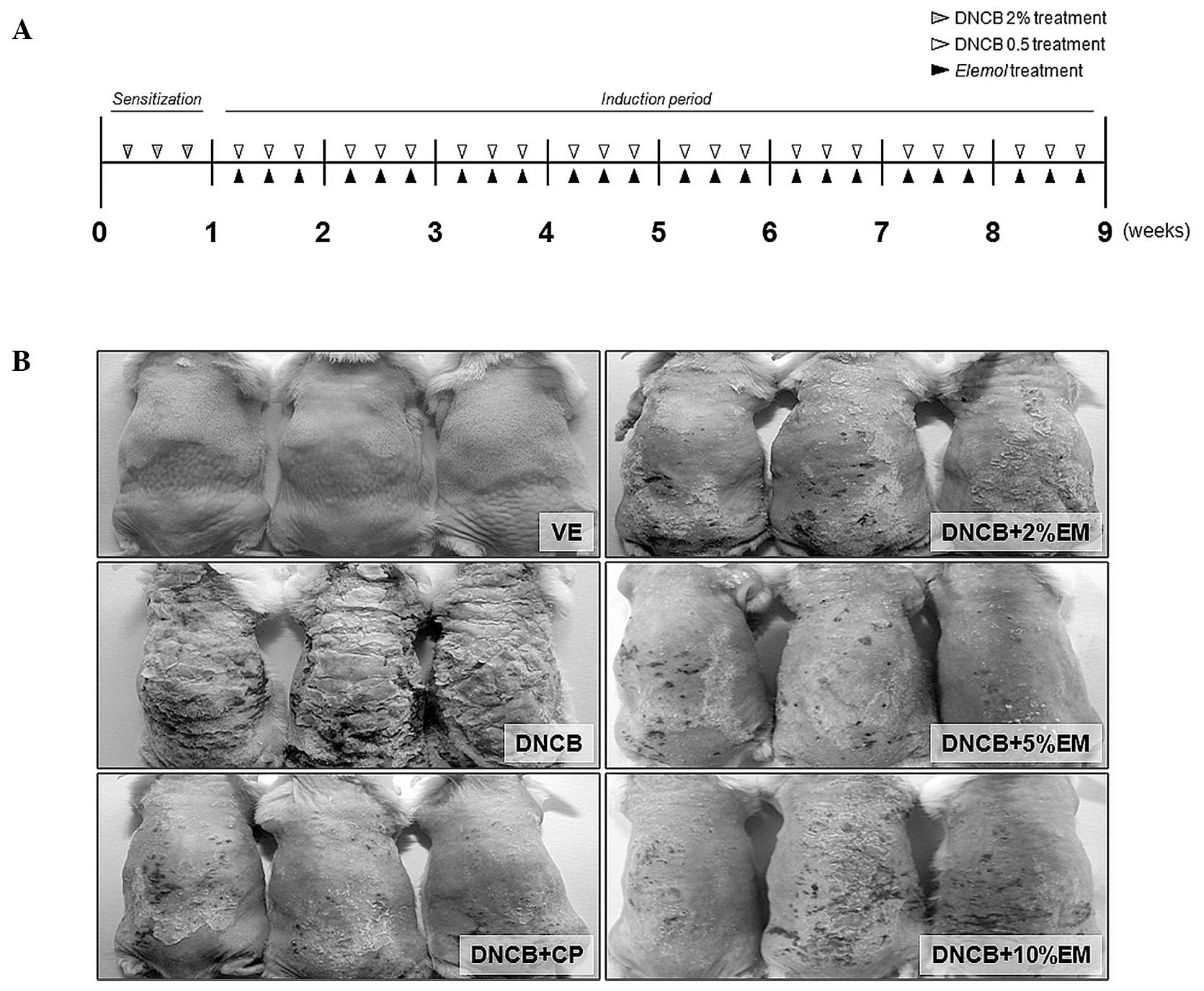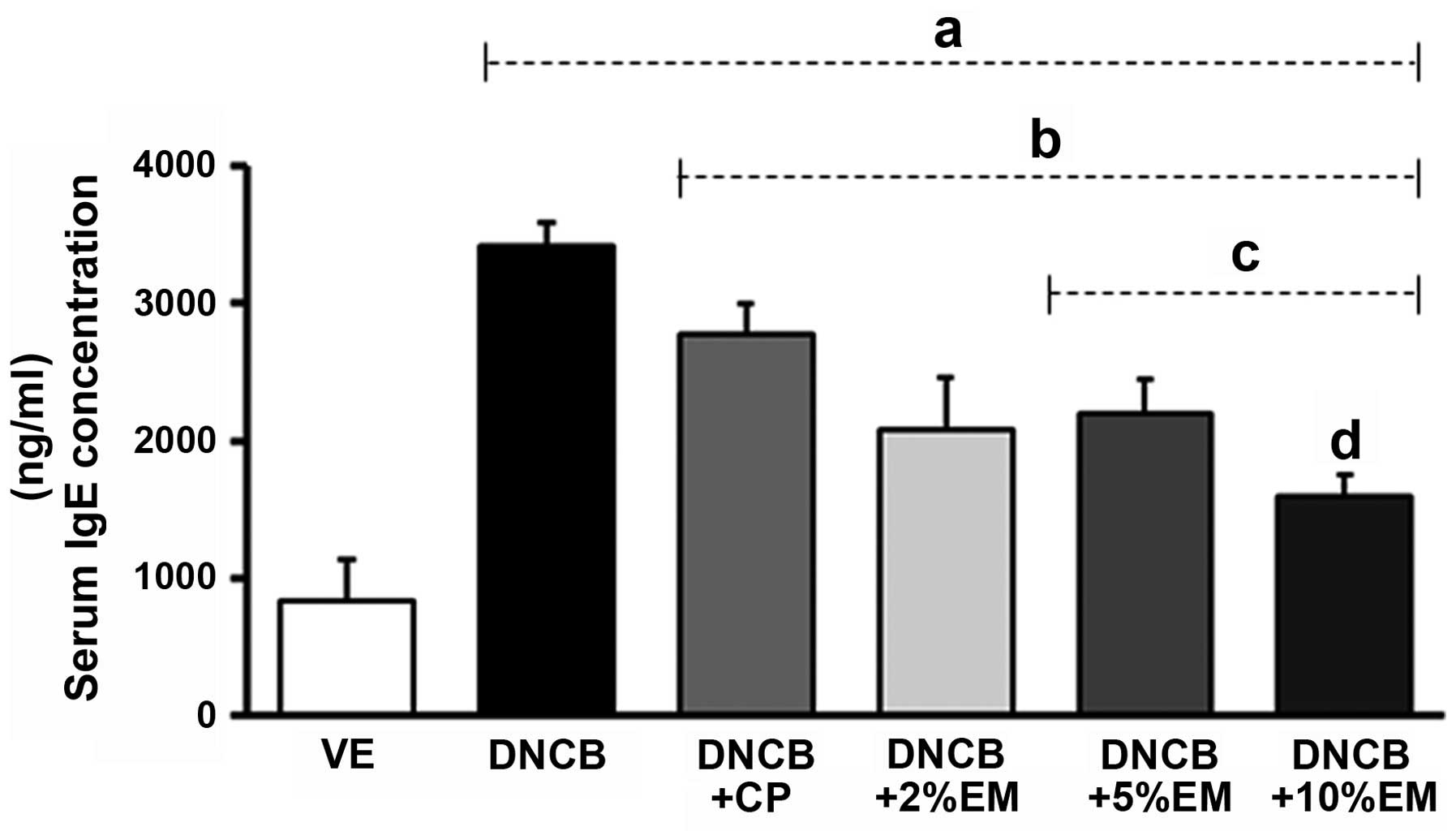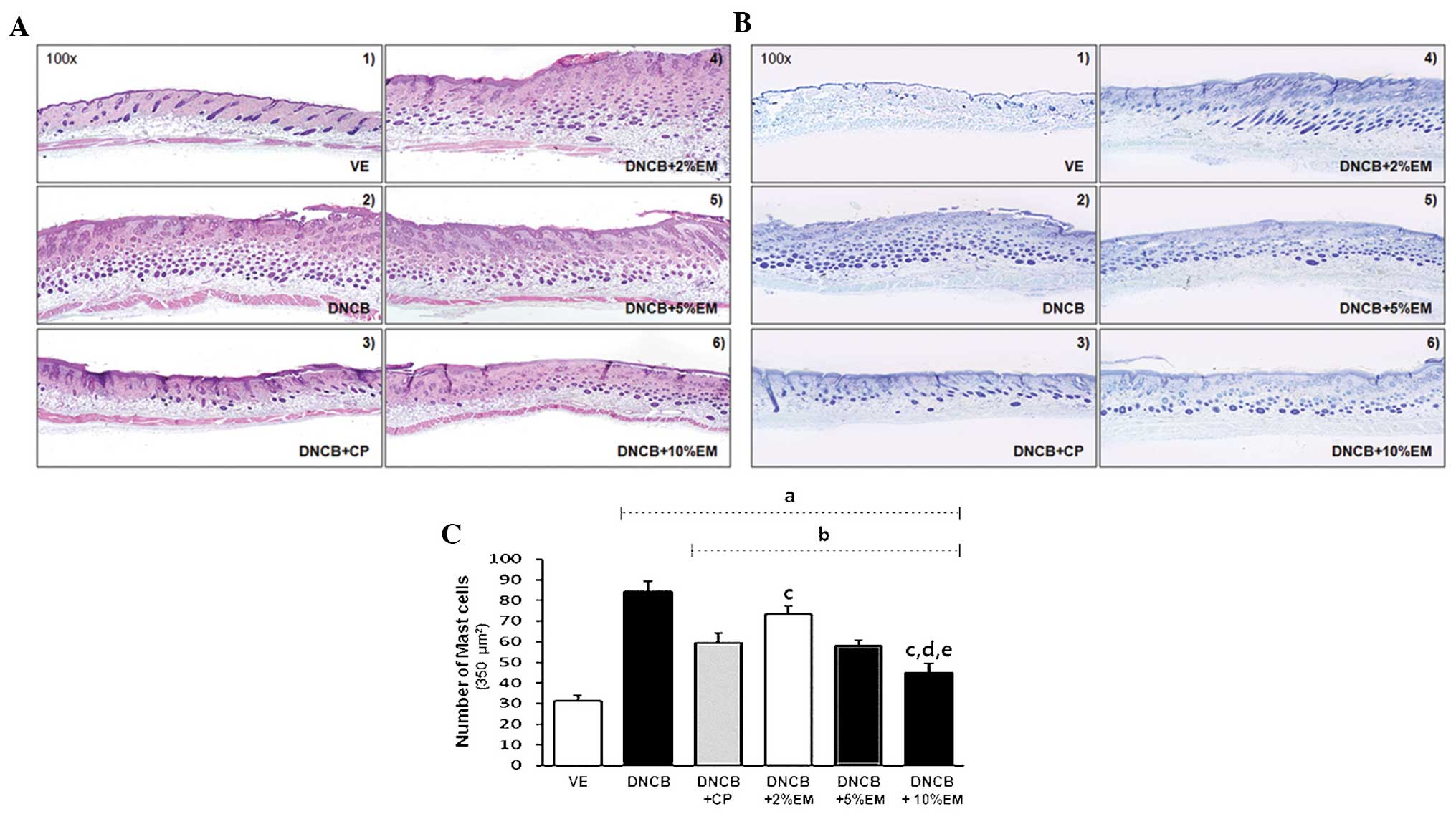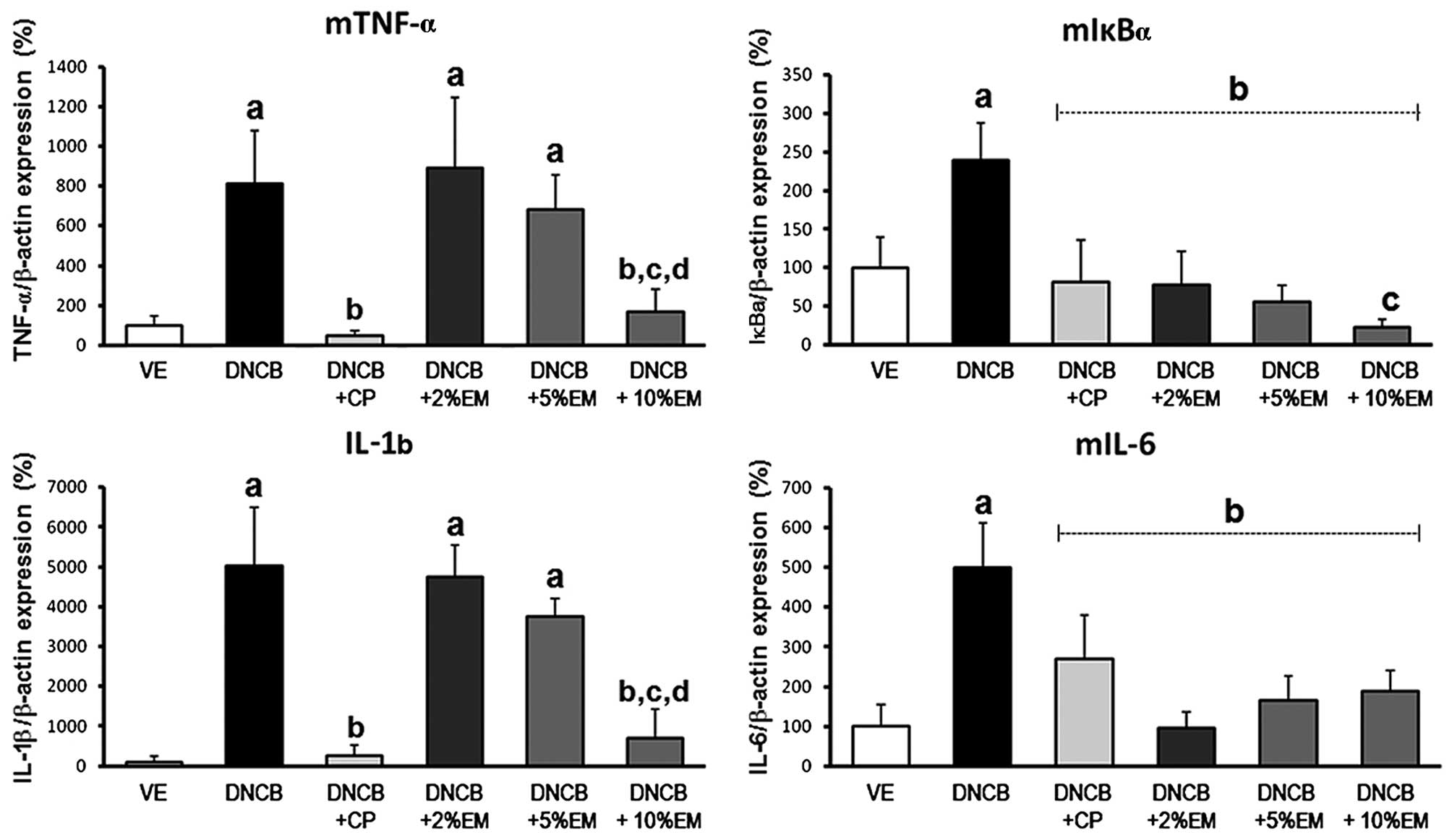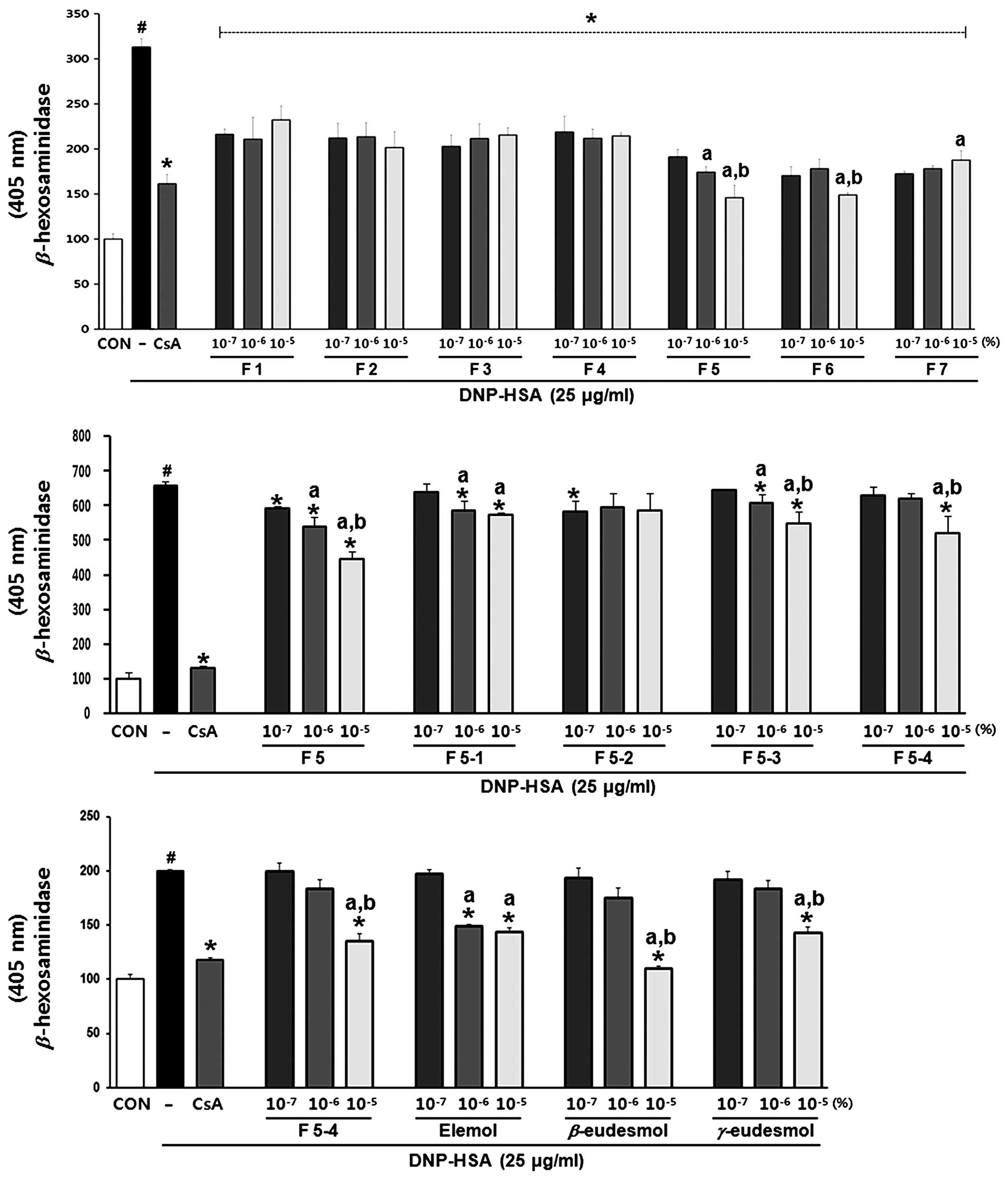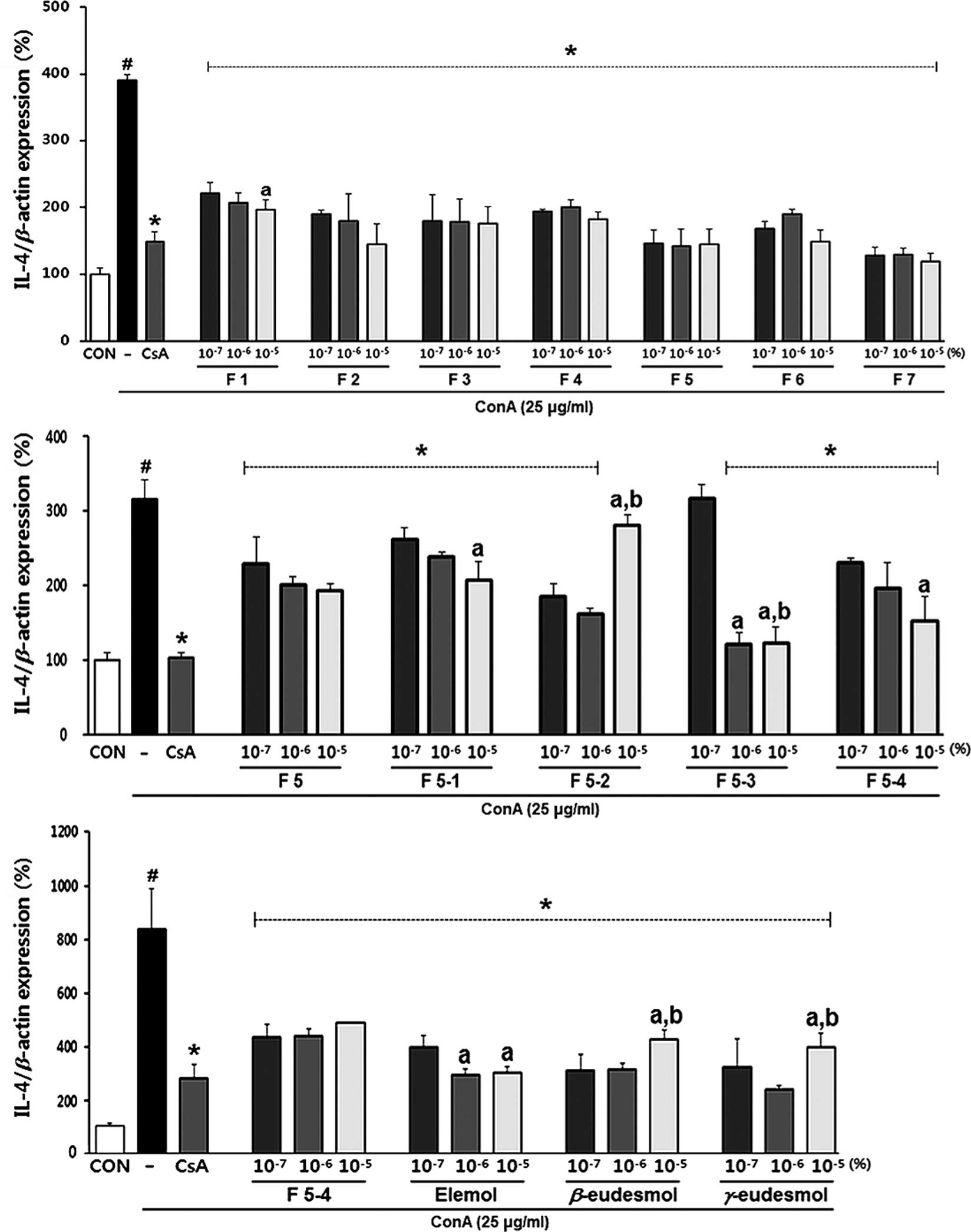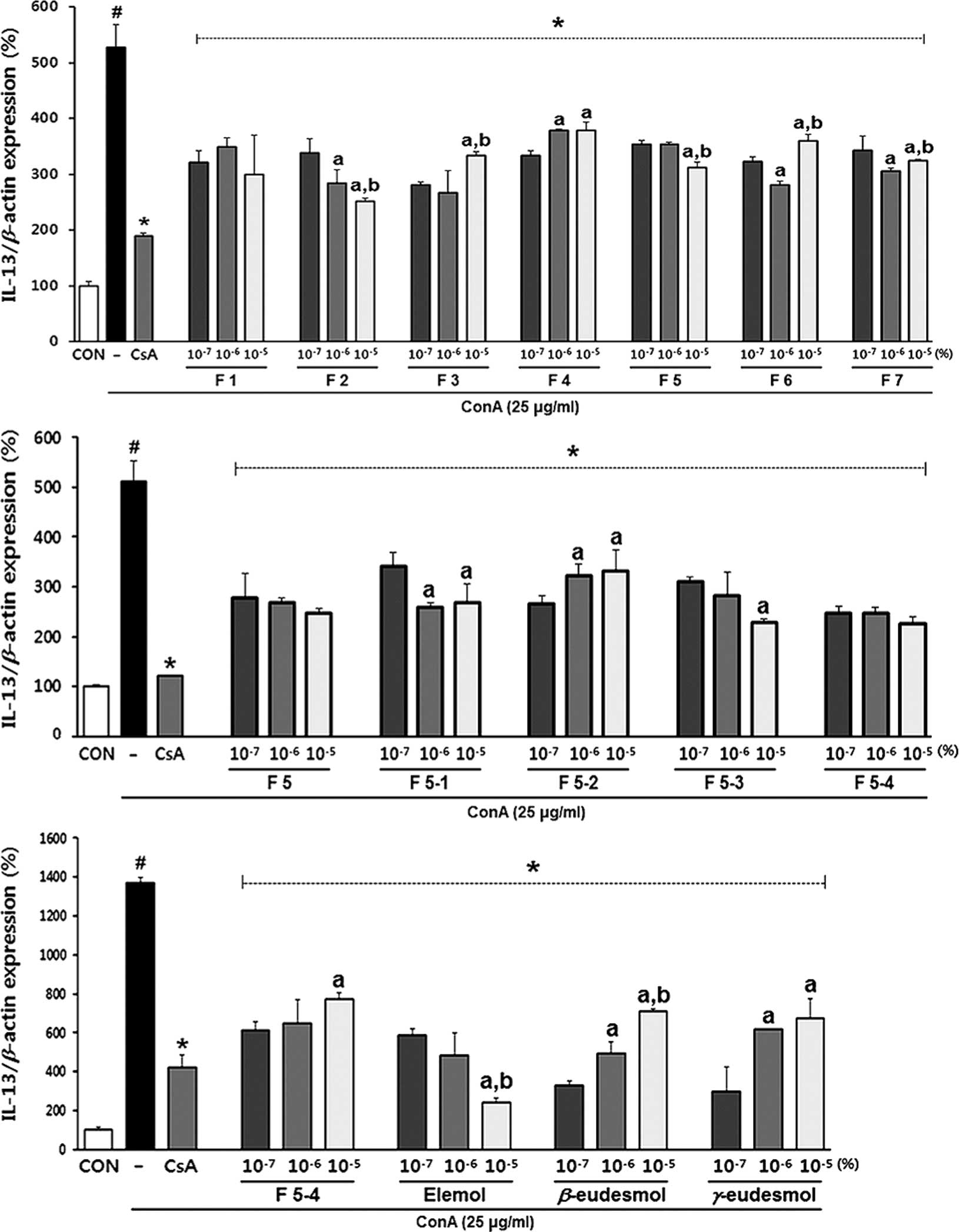|
1
|
Adlard BP, Dobbing J and Sands J: A
comparison of the effects of cytosine arabinoside and adenine
arabinoside on some aspects of brain growth and development in the
rat. Br J Pharmacol. 54:33–39. 1975. View Article : Google Scholar : PubMed/NCBI
|
|
2
|
Abramovits W: Atopic dermatitis. J Am Acad
Dermatol. 53(Suppl 1): S86–S93. 2005. View Article : Google Scholar : PubMed/NCBI
|
|
3
|
Shimizu N, Dairiki K, Ogawa S and Kaneko
T: Dietary whey protein hydrolysate suppresses development of
atopic dermatitis-like skin lesions induced by mite antigen in
NC/Nga mice. Allergol Int. 55:185–189. 2006. View Article : Google Scholar : PubMed/NCBI
|
|
4
|
Kang JS, Lee K, Han SB, Ahn JM, Lee H, Han
MH, Yoon YD, Yoon WK, Park SK and Kim HM: Induction of atopic
eczema/dermatitis syndrome-like skin lesions by repeated topical
application of a crude extract of Dermatophagoides pteronyssinus in
NC/Nga mice. Int Immunopharmacol. 6:1616–1622. 2006. View Article : Google Scholar : PubMed/NCBI
|
|
5
|
Grabbe S and Schwarz T: Immunoregulatory
mechanisms involved in elicitation of allergic contact
hypersensitivity. Immunol Today. 19:37–44. 1998. View Article : Google Scholar : PubMed/NCBI
|
|
6
|
Bardana EJ Jr: Immunoglobulin E- (IgE) and
non-IgE-mediated reactions in the pathogenesis of atopic
eczema/dermatitis syndrome (AEDS). Allergy. 59(Suppl 78): 25–29.
2004. View Article : Google Scholar : PubMed/NCBI
|
|
7
|
Yu M, Qi X, Moreno JL, Farber DL and
Keegan AD: NF-κB signaling participates in both RANKL- and
IL-4-induced macrophage fusion: Receptor cross-talk leads to
alterations in NF-κB pathways. J Immunol. 187:1797–1806. 2011.
View Article : Google Scholar : PubMed/NCBI
|
|
8
|
Lee SO, Lou W, Nadiminty N, Lin X and Gao
AC: Requirement for NF-(kappa)B in interleukin-4-induced androgen
receptor activation in prostate cancer cells. Prostate. 64:160–167.
2005. View Article : Google Scholar : PubMed/NCBI
|
|
9
|
Bhushan S, Hossain H, Lu Y, Geisler A,
Tchatalbachev S, Mikulski Z, Schuler G, Klug J, Pilatz A,
Wagenlehner F, et al: Uropathogenic E. coli induce different immune
response in testicular and peritoneal macrophages: Implications for
testicular immune privilege. PLoS One. 6:e284522011. View Article : Google Scholar : PubMed/NCBI
|
|
10
|
Georas SN, Guo J, De Fanis U and Casolaro
V: T-helper cell type-2 regulation in allergic disease. Eur Respir
J. 26:1119–1137. 2005. View Article : Google Scholar : PubMed/NCBI
|
|
11
|
Sohn EH, Jang SA, Joo H, Park S, Kang SC,
Lee CH and Kim SY: Anti-allergic and anti-inflammatory effects of
butanol extract from Arctium Lappa L. Clin Mol Allergy. 9:42011.
View Article : Google Scholar
|
|
12
|
Boguniewicz M and Leung DY: Atopic
dermatitis: A disease of altered skin barrier and immune
dysregulation. Immunol Rev. 242:233–246. 2011. View Article : Google Scholar : PubMed/NCBI
|
|
13
|
Garrigue JL, Nicolas JF, Fraginals R,
Benezra C, Bour H and Schmitt D: Optimization of the mouse ear
swelling test for in vivo and in vitro studies of weak contact
sensitizers. Contact Dermat. 30:231–237. 1994. View Article : Google Scholar
|
|
14
|
Watanabe H, Unger M, Tuvel B, Wang B and
Sauder DN: Contact hypersensitivity: The mechanism of immune
responses and T cell balance. J Interferon Cytokine Res.
22:407–412. 2002. View Article : Google Scholar : PubMed/NCBI
|
|
15
|
Gong JH, Shin D, Han SY, Park SH, Kang MK,
Kim JL and Kang YH: Blockade of airway inflammation by kaempferol
via disturbing Tyk-STAT signaling in airway epithelial cells and in
asthmatic mice. Evid Based Complement Alternat Med.
2013:2507252013. View Article : Google Scholar : PubMed/NCBI
|
|
16
|
Dharmage SC, Lowe AJ, Matheson MC, Burgess
JA, Allen KJ and Abramson MJ: Atopic dermatitis and the atopic
march revisited. Allergy. 69:17–27. 2014. View Article : Google Scholar
|
|
17
|
Hong CU, Ki CS, Kim NG and Kim YH:
Composition of essential oils from the leaves and the fruits of
Chamaecyparis obtusa and Chamaecyparis pisifera. J Korean Soc Agric
Chem Biotechnol. 44:116–121. 2001.In Korean.
|
|
18
|
Hong EJ, Na KJ, Choi IG, Choi KC and Jeung
EB: Antibacterial and antifungal effects of essential oils from
coniferous trees. Biol Pharm Bull. 27:863–866. 2004. View Article : Google Scholar : PubMed/NCBI
|
|
19
|
Lee HO, Baek SH and Han DM: Antimicrobial
effects of Chamaecyparis obtusa essential oil. Kor J Appl Microbiol
Biotechnol. 29:253–257. 2001.In Korean.
|
|
20
|
Trust TJ and Coombs RW: Antibacterial
activity of beta-thujaplicin. Can J Microbiol. 19:1341–1346. 1973.
View Article : Google Scholar : PubMed/NCBI
|
|
21
|
Arima Y, Nakai Y, Hayakawa R and Nishino
T: Antibacterial effect of beta-thujaplicin on staphylococci
isolated from atopic dermatitis: Relationship between changes in
the number of viable bacterial cells and clinical improvement in an
eczematous lesion of atopic dermatitis. J Antimicrob Chemother.
51:113–122. 2003. View Article : Google Scholar
|
|
22
|
Joo SS, Yoo YM, Ko SH, Choi W, Park MJ,
Kang HY, Choi KC, Choi IG and Jeung EB: Effects of essential oil
from Chamaecyparis obtusa on the development of atopic
dermatitis-like skin lesions and the suppression of Th cytokines. J
Dermatol Sci. 60:122–125. 2010. View Article : Google Scholar : PubMed/NCBI
|
|
23
|
Park D, Jeon JH, Kwon SC, Shin S, Jang JY,
Jeong HS, Lee I, Kim YB and Joo SS: Antioxidative activities of
white rose flower extract and pharmaceutical advantages of its
hexane fraction via free radical scavenging effects. Biochem Cell
Biol. 87:943–952. 2009. View Article : Google Scholar : PubMed/NCBI
|
|
24
|
Holtzapple MT and Humphrey AE: The effect
of organosolv pretreatment on the enzymatic hydrolysis of poplar.
Biotechnol Bioeng. 26:670–676. 1984. View Article : Google Scholar : PubMed/NCBI
|
|
25
|
Gebben HJ: Topical immunomodulators, such
as tacrolimus and pimecrolimus, in the treatment of atopic
dermatitis. Ned Tijdschr Geneeskd. 149:1816–1817. 2005.In
Dutch.
|
|
26
|
McClain RW, Yentzer BA and Feldman SR:
Comparison of skin concentrations following topical versus oral
corticosteroid treatment: Reconsidering the treatment of common
inflammatory dermatoses. J Drugs Dermatol. 8:1076–1079.
2009.PubMed/NCBI
|
|
27
|
Furue M, Terao H, Rikihisa W, Urabe K,
Kinukawa N, Nose Y and Koga T: Clinical dose and adverse effects of
topical steroids in daily management of atopic dermatitis. Br J
Dermatol. 148:128–133. 2003. View Article : Google Scholar : PubMed/NCBI
|
|
28
|
Hengge UR, Ruzicka T, Schwartz RA and Cork
MJ: Adverse effects of topical glucocorticosteroids. J Am Acad
Dermatol. 54:1–15; quiz 16–18. 2006. View Article : Google Scholar
|
|
29
|
Kawai M, Hirano T, Higa S, Arimitsu J,
Maruta M, Kuwahara Y, Ohkawara T, Hagihara K, Yamadori T, Shima Y,
et al: Flavonoids and related compounds as anti-allergic
substances. Allergol Int. 56:113–123. 2007. View Article : Google Scholar : PubMed/NCBI
|
|
30
|
Tan HY, Zhang AL, Chen D, Xue CC and Lenon
GB: Chinese herbal medicine for atopic dermatitis: A systematic
review. J Am Acad Dermatol. 69:295–304. 2013. View Article : Google Scholar : PubMed/NCBI
|
|
31
|
Munitz A, Brandt EB, Mingler M, Finkelman
FD and Rothenberg ME: Distinct roles for IL-13 and IL-4 via IL-13
receptor alpha1 and the type II IL-4 receptor in asthma
pathogenesis. Proc Natl Acad Sci USA. 105:7240–7245. 2008.
View Article : Google Scholar : PubMed/NCBI
|
|
32
|
Wang W, Zhou Q, Liu L and Zou K:
Anti-allergic activity of emodin on IgE-mediated activation in
RBL-2H3 cells. Pharmacol Rep. 64:1216–1222. 2012. View Article : Google Scholar : PubMed/NCBI
|
|
33
|
Heinzel FP, Sadick MD, Holaday BJ, Coffman
RL and Locksley RM: Reciprocal expression of interferon gamma or
interleukin 4 during the resolution or progression of murine
leishmaniasis. Evidence for expansion of distinct helper T cell
subsets. J Exp Med. 169:59–72. 1989. View Article : Google Scholar : PubMed/NCBI
|
|
34
|
Grewe M, Bruijnzeel-Koomen CA, Schöpf E,
Thepen T, Langeveld-Wildschut AG, Ruzicka T and Krutmann J: A role
for Th1 and Th2 cells in the immunopathogenesis of atopic
dermatitis. Immunol Today. 19:359–361. 1998. View Article : Google Scholar : PubMed/NCBI
|
|
35
|
Surh YJ, Na HK, Lee JY and Keum YS:
Molecular mechanisms underlying anti-tumor promoting activities of
heat-processed Panax ginseng C.A. Meyer. J Korean Med Sci.
16(Suppl): S38–S41. 2001. View Article : Google Scholar : PubMed/NCBI
|
|
36
|
Jang HW, Ka MH and Lee KG: Antioxidant
activity and characterization of volatile extracts of Capsicum
annuum L. and Allium spp. Flavour Fragrance J. 23:178–184. 2008.
View Article : Google Scholar
|
|
37
|
Thaçi D: Long term management of childhood
atopic dermatitis with calcineurin inhibitors. Hautarzt.
54:418–423. 2003.In German.
|
|
38
|
Vender RB: Alternative treatments for
atopic dermatitis: A selected review. Skin Therapy Lett. 7:1–5.
2002.PubMed/NCBI
|
|
39
|
Yoon S, Lee J and Lee S: The therapeutic
effect of evening primrose oil in atopic dermatitis patients with
dry scaly skin lesions is associated with the normalization of
serum gamma-interferon levels. Skin Pharmacol Appl Skin Physiol.
15:20–25. 2002. View Article : Google Scholar : PubMed/NCBI
|















